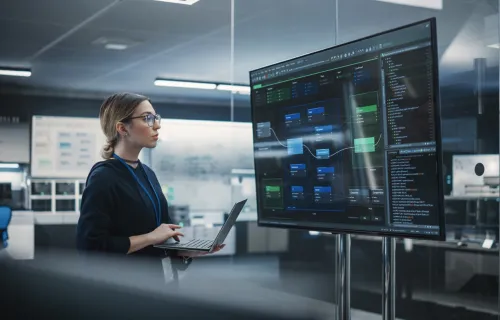Utilities are confronting a period of transformational change. The pervasive adoption of Distributed Energy Resources (DERs) is driving the need to reevaluate how they manage power network infrastructure. Overcoming the challenges that come with integrating DERs, DERMS are here to smoothly usher us into the new era of energy resources.
What are distributed energy resources?
DERs is a rapidly growing sector in the energy industry that refers to a distributed generation of electricity from clean, renewable sources. DER systems can be either grid-connected or off-grid and are often used in remote areas where it is difficult to extend the electrical grid.
They can power anything from small appliances to entire communities and offer a number of advantages over traditional energy sources. They are typically more efficient and have lower emissions, and can also provide energy security in the event of a grid outage. As the costs of renewables continue to fall, DERs are expected to play an increasingly important role in the global energy mix.
Potential Challenges of Integrating DERs
DERs will continue to advance the utility sector toward more stable, secure, and resilient distribution systems. But as diverse resources with different characteristics, constraints, and technologies connect to the grid, the direction of power flow is changing and will introduce new challenges to network protection, forecasting, planning, power resiliency, and more, including:
- Lack of control and visibility over independently owned assets operating on the grid.
- Inconsistent implementations of integration protocols and communication standards to facilitate monitoring and control.
- Insufficient optimization of DER usage to improve network reliability and performance and minimize carbon usage.
- Inability to support the complete customer engagement, settlement, and billing life cycle.
Overcoming DERs Challenges with DERMS
To address these challenges and accommodate the growing expectations of consumers in the energy ecosystem, CGI OpenGrid DERMS is built on a network model to help utilities orchestrate and regulate DERs for enhanced reliability, network efficiency, and grid performance.
What are distributed energy resource management systems?
DERMS – short for Distributed Energy Resource Management System – is a technology system that controls and optimizes the flow of electricity from distributed energy resources, such as solar panels and wind turbines. DERMS may be deployed by utilities and other electric grid operators to manage the increasing amount of renewable energy on the grid.
Using algorithms to forecast energy production and demand, DERMS dispatch the right amount of power to meet demand. DERMS can also provide grid operators with real-time data on the status of distributed energy resources, allowing them to respond quickly to changes in conditions.
5 Benefits of DERMS
By managing the output of DERs in real time, DERMS can help to improve the overall efficiency of the electricity grid. In addition, DERMS can also provide grid operators with valuable data on the performance of DERs. This data can be used to identify potential problems and improve the design of future DERs installations. Ultimately, DERMS can play an important role in making the electricity grid more efficient, reliable, and sustainable. The benefits of deploying a DERMS include:
- Full integration and greater visibility. Independently owned DERs are registered, validated, and connected with the existing network assets to provide a holistic view of power production and consumption across an entire service territory.
- Monitoring. Performance of connected DERs is monitored, and key data such as power, Volt-Var, and voltage are visualized and aggregated by the transformer and feeder.
- Smart dispatching. Dispatch of constraints and commands can be performed manually, scheduled based on date and time, automatically triggered based on events, or imported from external systems.
- Scheduling. Priority scheduling of dispatches based on various allocation profiles include fault proximity, connection agreement, financial goals to command control equitability, and curtailment dispatches across DERs.
- Optimization. DERMS can help optimize the use of DERs to improve system performance and reliability while also reducing costs.
DERMS can be beneficial for a variety of different entities, including electric utilities, grid operators, and energy consumers. They can help to optimize the use of energy resources and improve the efficiency of the power grid. Additionally, DERMS can provide information that can be used to make decisions about energy resource planning and management.
As a result, a DERMS can be a valuable tool for any professional or enterprise involved in the distribution or consumption of energy resources.
CGI OpenGrid DERMS and Distribution Management System (DMS) help provide a real-time view of the grid, allowing utilities to see where power is being generated and consumed. This helps them to make informed decisions about how to best utilize DERs.
Together, CGI DMS and DERMS solutions provide utilities with the tools they need to fully integrate distributed energy resources into the grid and continue their progress toward the goal of effective adoption of sustainable and diverse power sources into the nation’s evolving energy infrastructure.





